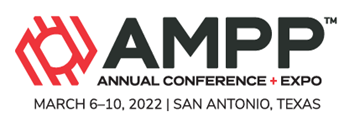Search
Products tagged with 'coating application'
View as
Sort by
Display
per page
05031 Testing and Selection of Girth Weld Protective Coatings
Product Number:
51300-05031-SG
ISBN:
05031 2005 CP
Publication Date:
2005
$20.00
Aesthetic Issues With Spray-Applied Fluoropolymer Coating System
Product Number:
51322-17971-SG
Publication Date:
2022
$20.00
Angles and Demons in the Realm of Protective Coatings: The Underworld of VOCs
Product Number:
41211-636-SG
Publication Date:
2011
$20.00
Application and Evaluation of Coatings Over Hot-Dipped Galvanizing
Product Number:
41215-938-SG
Publication Date:
2015
$20.00
Application of Fluid Applied Linings in Concrete Secondary Containment Structures
Product Number:
41208-397-SG
Publication Date:
2008
$20.00
Application Process for Optimum Paint and Coating Systems’ Performance for Navy Ships
Product Number:
SP21416-2020
Publication Date:
2020
$109.00
Bedeviled Bridges: An Answer to a National Scandal
Product Number:
51217-062-SG
Publication Date:
2017
$20.00
Bring on the Heat: A Novel Technique to Assess Thick-film Thermostat Plural Competent Coating Application
Product Number:
51219-211-SG
Publication Date:
2019
$20.00
Brooklyn Bridge - Repainting the Most Iconic Structure in the World
Product Number:
41213-797-SG
Publication Date:
2013
$20.00
Case Study: A Polyaspartic Coating Made A Commercial Bakery Floor Look Really Sweet
Product Number:
51217-068-SG
Publication Date:
2017
$20.00
Chevron Upstream Aboveground Storage Tanks Coating Management
Product Number:
51323-19556-SG
Publication Date:
2023
$20.00
Coating Failures on Painted Galvanized Mast Arms
Product Number:
41208-402-SG
Publication Date:
2008
$20.00











